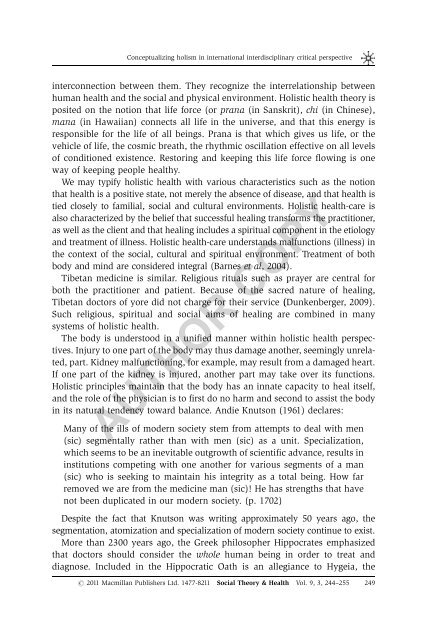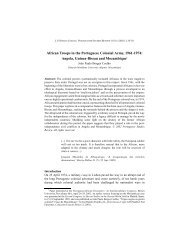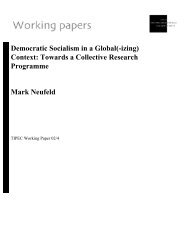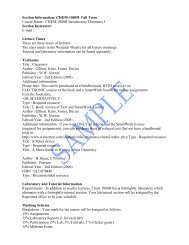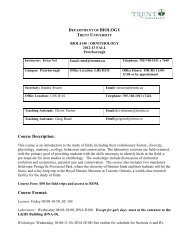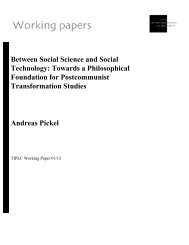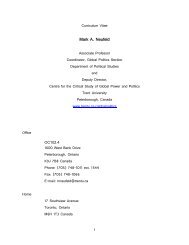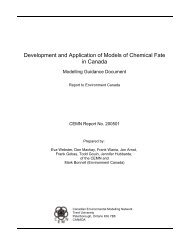AUTHOR COPY - Trent University
AUTHOR COPY - Trent University
AUTHOR COPY - Trent University
You also want an ePaper? Increase the reach of your titles
YUMPU automatically turns print PDFs into web optimized ePapers that Google loves.
Conceptualizing holism in international interdisciplinary critical perspective<br />
interconnection between them. They recognize the interrelationship between<br />
human health and the social and physical environment. Holistic health theory is<br />
posited on the notion that life force (or prana (in Sanskrit), chi (in Chinese),<br />
mana (in Hawaiian) connects all life in the universe, and that this energy is<br />
responsible for the life of all beings. Prana is that which gives us life, or the<br />
vehicle of life, the cosmic breath, the rhythmic oscillation effective on all levels<br />
of conditioned existence. Restoring and keeping this life force flowing is one<br />
way of keeping people healthy.<br />
We may typify holistic health with various characteristics such as the notion<br />
that health is a positive state, not merely the absence of disease, and that health is<br />
tied closely to familial, social and cultural environments. Holistic health-care is<br />
also characterized by the belief that successful healing transforms the practitioner,<br />
as well as the client and that healing includes a spiritual component in the etiology<br />
and treatment of illness. Holistic health-care understands malfunctions (illness) in<br />
the context of the social, cultural and spiritual environment. Treatment of both<br />
body and mind are considered integral (Barnes et al, 2004).<br />
Tibetan medicine is similar. Religious rituals such as prayer are central for<br />
both the practitioner and patient. Because of the sacred nature of healing,<br />
Tibetan doctors of yore did not charge for their service (Dunkenberger, 2009).<br />
Such religious, spiritual and social aims of healing are combined in many<br />
systems of holistic health.<br />
The body is understood in a unified manner within holistic health perspectives.<br />
Injury to one part of the body may thus damage another, seemingly unrelated,<br />
part. Kidney malfunctioning, for example, may result from a damaged heart.<br />
If one part of the kidney is injured, another part may take over its functions.<br />
Holistic principles maintain that the body has an innate capacity to heal itself,<br />
and the role of the physician is to first do no harm and second to assist the body<br />
in its natural tendency toward balance. Andie Knutson (1961) declares:<br />
<strong>AUTHOR</strong> <strong>COPY</strong><br />
Many of the ills of modern society stem from attempts to deal with men<br />
(sic) segmentally rather than with men (sic) as a unit. Specialization,<br />
which seems to be an inevitable outgrowth of scientific advance, results in<br />
institutions competing with one another for various segments of a man<br />
(sic) who is seeking to maintain his integrity as a total being. How far<br />
removed we are from the medicine man (sic)! He has strengths that have<br />
not been duplicated in our modern society. (p. 1702)<br />
Despite the fact that Knutson was writing approximately 50 years ago, the<br />
segmentation, atomization and specialization of modern society continue to exist.<br />
More than 2300 years ago, the Greek philosopher Hippocrates emphasized<br />
that doctors should consider the whole human being in order to treat and<br />
diagnose. Included in the Hippocratic Oath is an allegiance to Hygeia, the<br />
r 2011 Macmillan Publishers Ltd. 1477-8211 Social Theory & Health Vol. 9, 3, 244–255<br />
249


